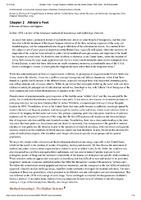Chapter 2 Athlete's Foot
A Disease of Fitness and Hygiene
Author(s)
Homei, Aya
Worboys, Michael
Collection
WellcomeLanguage
EnglishAbstract
In this book, we discuss the changing medical and public profile of fungal infections in the period 1850–2000. We consider four sets of diseases: ringworm and athlete’s foot (dermatophytosis); thrush or candidiasis (infection with Candida albicans); endemic, geographically specific infections in North America (coccidioidomycosis, blastomycosis and histoplasmosis) and mycotoxins; and aspergillosis (infection with Aspergillus fumigatus). We discuss each disease in relation to developing medical knowledge and practices, and to social changes associated with ‘modernity’. Thus, mass schooling provided ideal conditions for the spread of ringworm of the scalp in children, and the rise of college sports and improvement of personal hygiene led to the spread of athlete’s foot. Antibiotics seemed to open the body to more serious Candida infections, as did new methods to treat cancers and the development of transplantation. Regional fungal infections in North America came to the fore due to the economic development of certain regions, where population movement brought in non-immune groups who were vulnerable to endemic mycoses. Fungal toxins or mycotoxins were discovered as by-products of modern food storage and distribution technologies. Lastly, the rapid development and deployment of new medical technologies, such as intensive care and immunosuppression in the last quarter of the twentieth century, increased the incidence of aspergillosis and other systemic mycoses.
Keywords
candidiasis; mycotoxins; aspergillosis; fungal infections; dermatophytosisOCN
1051779167Publisher
Springer NaturePublisher website
https://www.springernature.com/gp/products/booksPublication date and place
Basingstoke, 2013Grantor
Imprint
Palgrave MacmillanSeries
Science, Technology and Medicine in Modern History,Classification
Diseases and disorders


 Download
Download